No matter where you’re from or who you are, you probably set foot in a physical store every week. And while print advertising has existed in grocery stores for years, it wasn't until more recently that in-store advertising was digitized, which has both grown its impact and expanded access for both endemic and non-endemic brands.
In-store retail media allows brands to reach their audience, build loyalty, and drive conversion with digital advertising located right where they shop--in physical stores. Playing a part of the next wave of retail media, in-store retail media is transforming the experience of brick-and-mortar stores, providing retailers with a near real-time opportunity to update in-store content, while also giving brands the chance to reach their audience while they're in a buying mindset.
What is In-Store Retail Media?
In-store retail media refers to digital marketing that happens inside physical retail stores. Sounds counterintuitive, right? While brick-and-mortar stores might seem separate from the world of digital media and advertising, they’re actually an untapped gold mine.
Historically, the store has been limited as an advertising medium. Static in-store ads involve long planning cycles and are primarily limited to endemic brands and promotion-based. With digital in-store advertising, brands can easily target and launch dynamic campaigns in real-time to shoppers similar to how they would for online advertising.
Today, technology has transformed the average store into a versatile and highly influential location. Smart carts, digital displays, and even in-store audio are all ripe with opportunities for advertisers looking to reach consumers.
What's more, modern in-store advertising can accomplish objectives across the funnel with the ability to measure everything from brand lift to foot traffic to sales lift. Different from its print predecessor, digital in-store advertising blurs the lines between brand and performance marketing, providing an impactful brand experience, while also in many cases driving sales.
The Power of In-Store Retail Media in Action
Spotify
Let’s take a look at a real-world example of how strategic in-store retail media can impact audiences.

Spotify ran a campaign on Grocery TV’s network reminding shoppers to check out their app just before they got into their cars. The strategy was simple: reach consumers at a quiet moment in the middle of their busy day and contextual messaging that speaks to what they’re doing next (driving home or completing other errands).
Land O'Lakes
Another example is Land O'Lakes, which used contextual messaging that made light of where the shopper is at in their store visit, the checkout. Even though shoppers might not actually leave the line to go back for another item, they might be more likely to remember the ad and the brand because of the tailored messaging. What Land O'Lakes also did well was prominently featuring their brand, product, and how the product could be used in the ad.
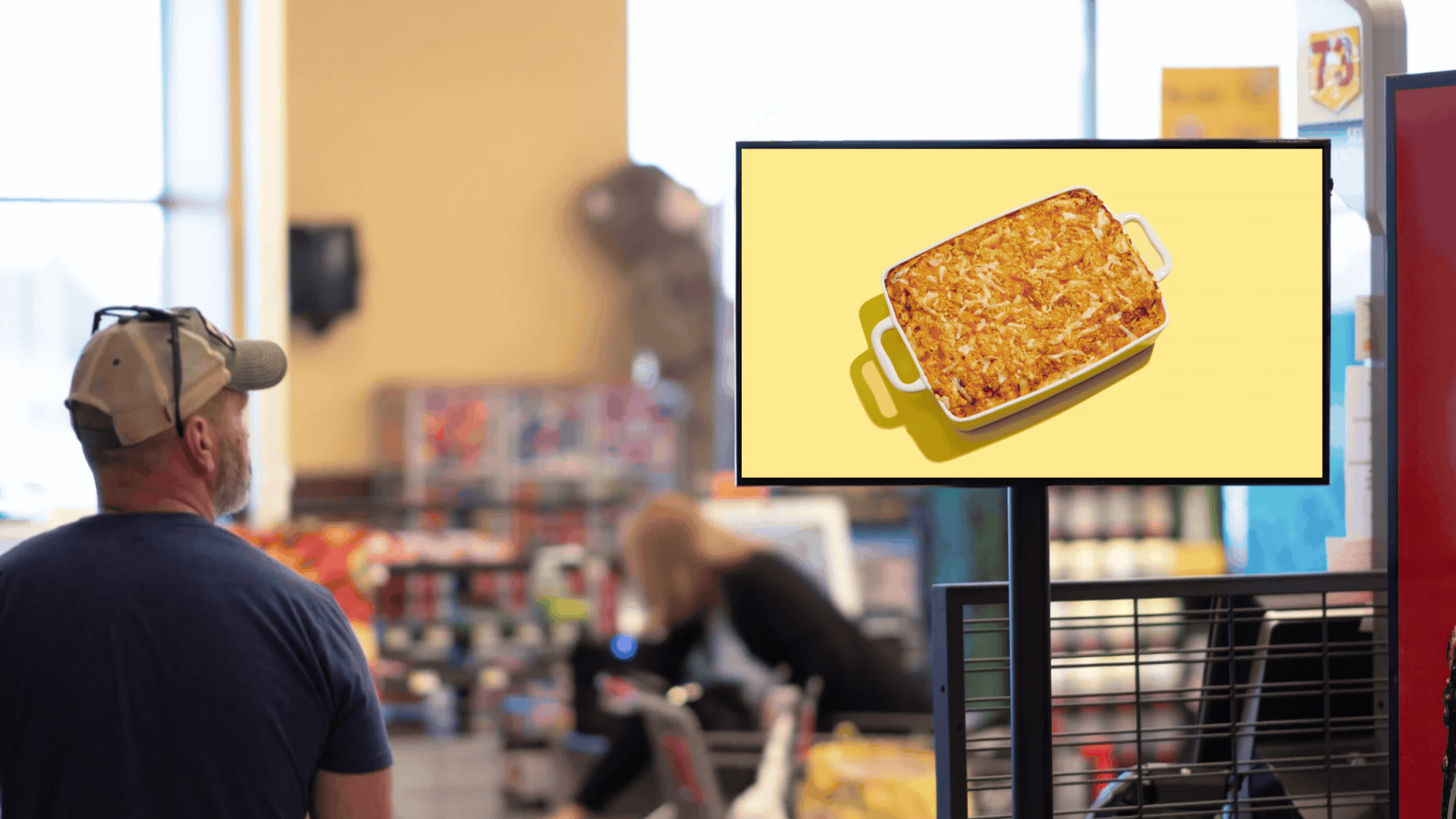
Key Benefits of In-Store Retail Media
In-store advertising is redefining retail media and how brands approach their media mix. Its specific benefits address current industry challenges and unlock new opportunities to connect with audiences.
How, where, and when you present your message is just as important as what it actually says.
In-store retail media capitalizes on these moments and positions your brand in front of your audience when they're in a buying mindset or quite literally able to turn around and purchase your product.
The grocery store also offers the brand safety other channels may lack. It's family-friendly and often considered the center of a community, where you bump into friends and neighbors. This plays a role in how your advertising is perceived.
Place your brand in a context that resonates with consumers
When a consumer visits the store, they have one clear goal in mind: to buy something. Advertising that supports them on this journey is not only more effective, but more likely to be perceived positively (and thus acted on).
Placing contextually relevant ads in the store, where consumers are in a buying mindset, yields better results than any other advertising channel in terms of its effect on experience. In fact, one Grocery TV survey found that 87% of consumers were accepting or positive toward in-store advertising.
In other words, in-store advertising is perceived more positively by consumers because it enhances their experience at the store. On the flip side, other ad channels that consumers typically visit to be entertained are more disruptive to their experience.
We also know that consumers are more likely to pay attention to in-store media than other advertising channels. This is especially impactful when we consider that contextually-relevant in-store ads have an impact even beyond a consumer’s initial trip to a retailer.
Brands should also consider the context of the grocery store in the consumer's broader purchase journey. For example, we know that 70% of Grocery TV's audience visits Walmart within 90 days of their visit, offering brands the opportunity to influence cross-shopping decisions.
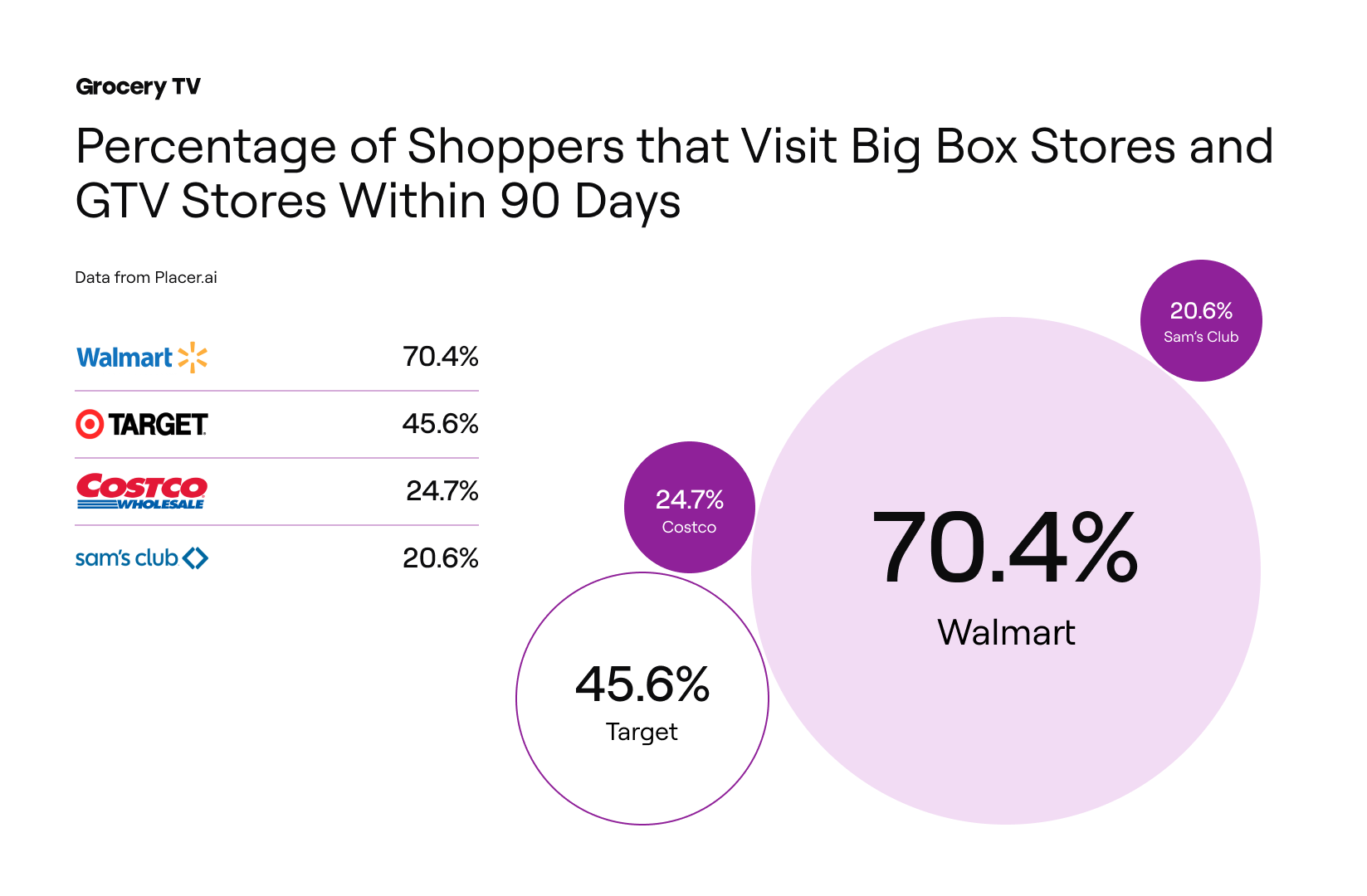
Reach more people with greater efficiency
The loss of third-party data identifiers and decline of linear TV has pushed marketers to find new ways to reach their target audience. In-store retail media allows you to simultaneously reach massive audiences and specific demographics.
Nearly 1 in 4 Americans are reached on Grocery TV’s network, which means almost 80 million consumers are within a brand’s reach.
In addition to reach, visitation frequency is a major draw for particular types of retail like grocery. A 2022 Gallup report notes that 82% of people visit the grocery store at least once a week which results in an average of nearly 7 visits per month.
In addition to traffic far greater than online, brick-and-mortar stores offer brands access to key household decision-makers. This includes hard-to-reach audiences like millennials and Gen-Zers, who are less exposed to traditional advertising vehicles (like commercial breaks on TV).
What's arguably most important to note about the in-store audience is that they're not solely responsible for making decisions on their groceries. They are often the decision maker for a variety of household purchases such as insurance, healthcare, and automobiles.
Build awareness within specific segments or demographics
In-store advertising offers brands targeting demographic, geographic, and behavioral targeting capabilities that allow brands to hone in on their specific audience.
Let’s turn to an example of this in action. The growing base of Hispanic shoppers in the US – and their immense purchasing power – has prompted many brands to shift their strategies and better understand how best to stay top of mind with this audience.
In-store retail media allows brands to run multicultural advertising campaigns in both geographic areas that over-index on the Hispanic population as well as culturally relevant retailers like El Rancho or Cardenas.
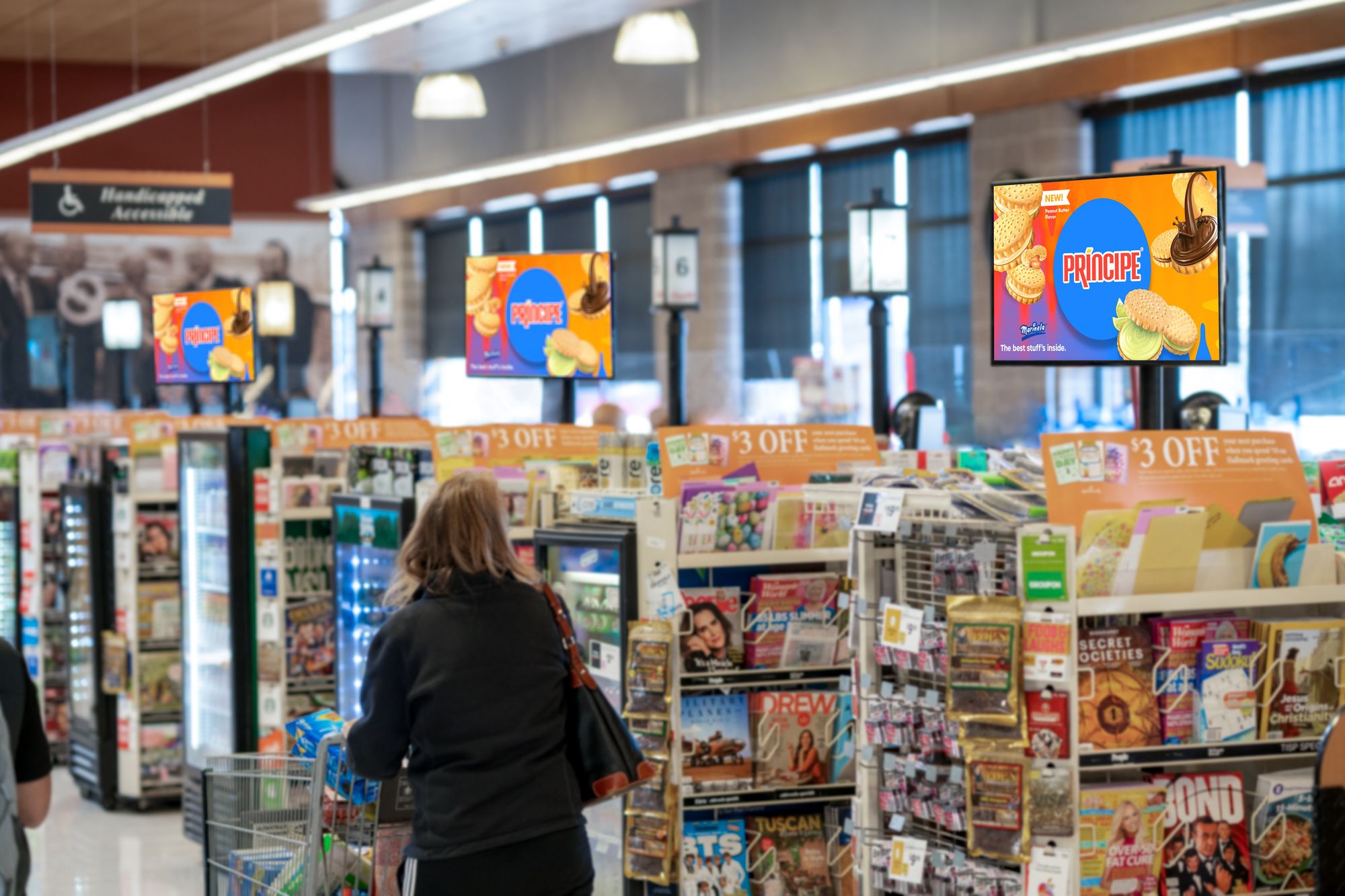
The Hispanic audience is also unique in that it places more value on the in-person shopping trip than other demographics. In other words, Hispanic shoppers prefer in-store shopping over other mediums. Both endemic and non-endemic brands can cater to this preference, offering tailored advertisements that showcase the benefits of their products while consumers are already at the point of sale.
How to Implement In-Store Retail Media into Your Strategy
Once you’ve decided that in-store retail media is the right move for your brand, how can you go about implementing it into your advertising mix? Be sure to keep these key considerations in mind.
Consider the Funnel
Think of in-store advertising as a full-funnel medium. It can target consumers at every step of their journey:
- Awareness: Shoppers become familiar with your brand, keeping your messages top of mind.
- Consideration: Your brand stands out from the rest thanks to targeted campaigns that meet consumers where they’re at just when they’re thinking about what to buy.
- Conversion: Consumers are encouraged to buy a product or inspire action on other platforms.
Measure & Optimize
Make it a priority to understand what works for your media campaign and what doesn’t with the right performance metrics. In-store retail media channels have the ability to measuare a range of KPIs like store visits, app or site downloads, sales, etc.
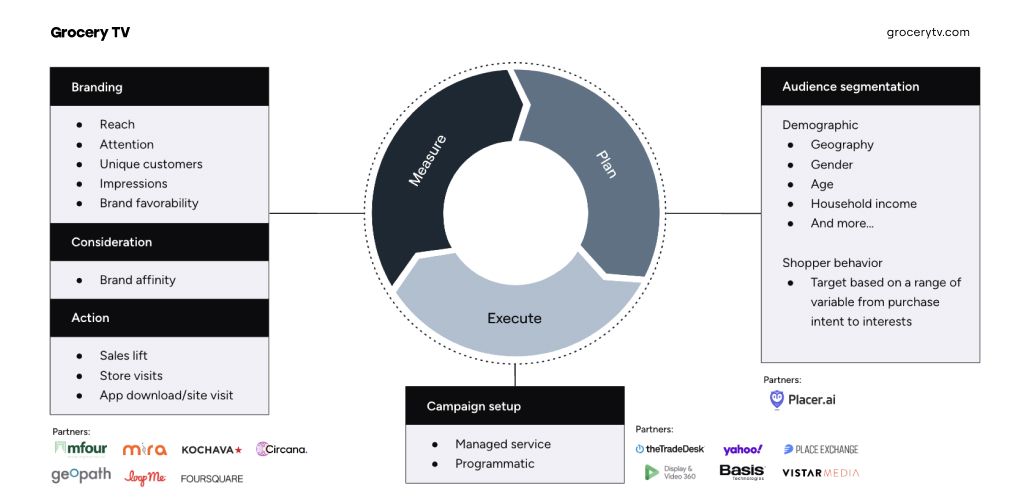
With Grocery TV’s retail media network, you get access to data partnerships that help you enhance the planning, execution, and measurement of your campaigns. Grocery TV helps brands track details like:
- Brand lift (brand awareness, consideration, recall, etc.)
- Foot traffic attribution
- Sales lift
- Web conversions (incremental web visits, sign-ups, etc.)
The Bottom Line
In-store retail media may still be relatively new, but it’s already making a name for itself as a highly efficient and versatile advertising channel.
Whether you’re an advertiser or a retailer, you can benefit from delivering meaningful messages to your consumers when they're most open to them.

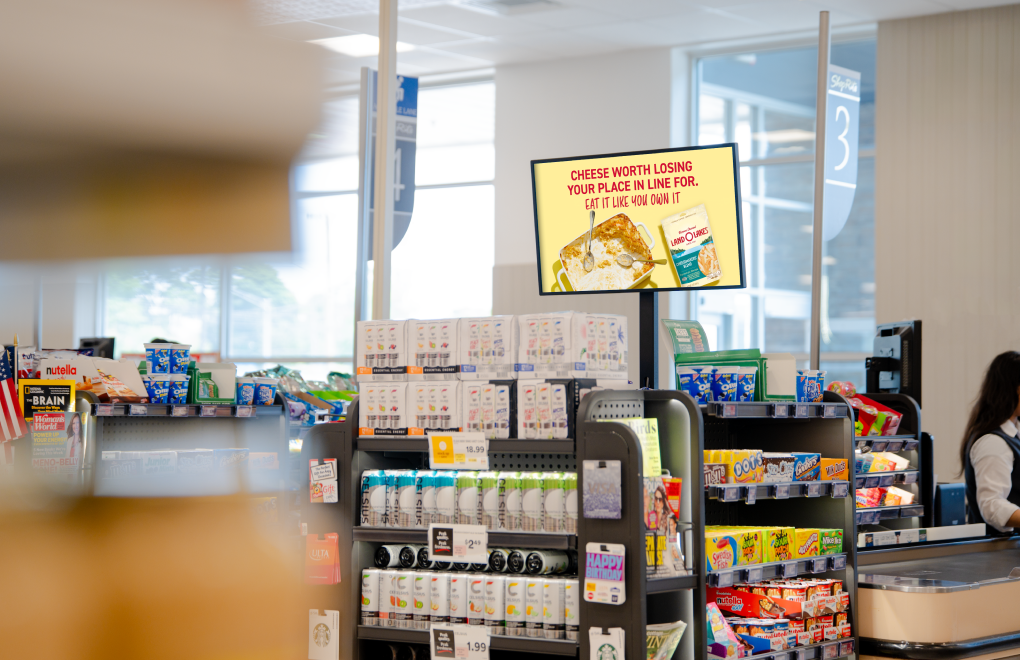


![[Report] In-Store Retail Media: The Key to Driving Incremental Reach for Brands](/content/images/2025/05/GTV-Incremental-Study-1.jpg)
